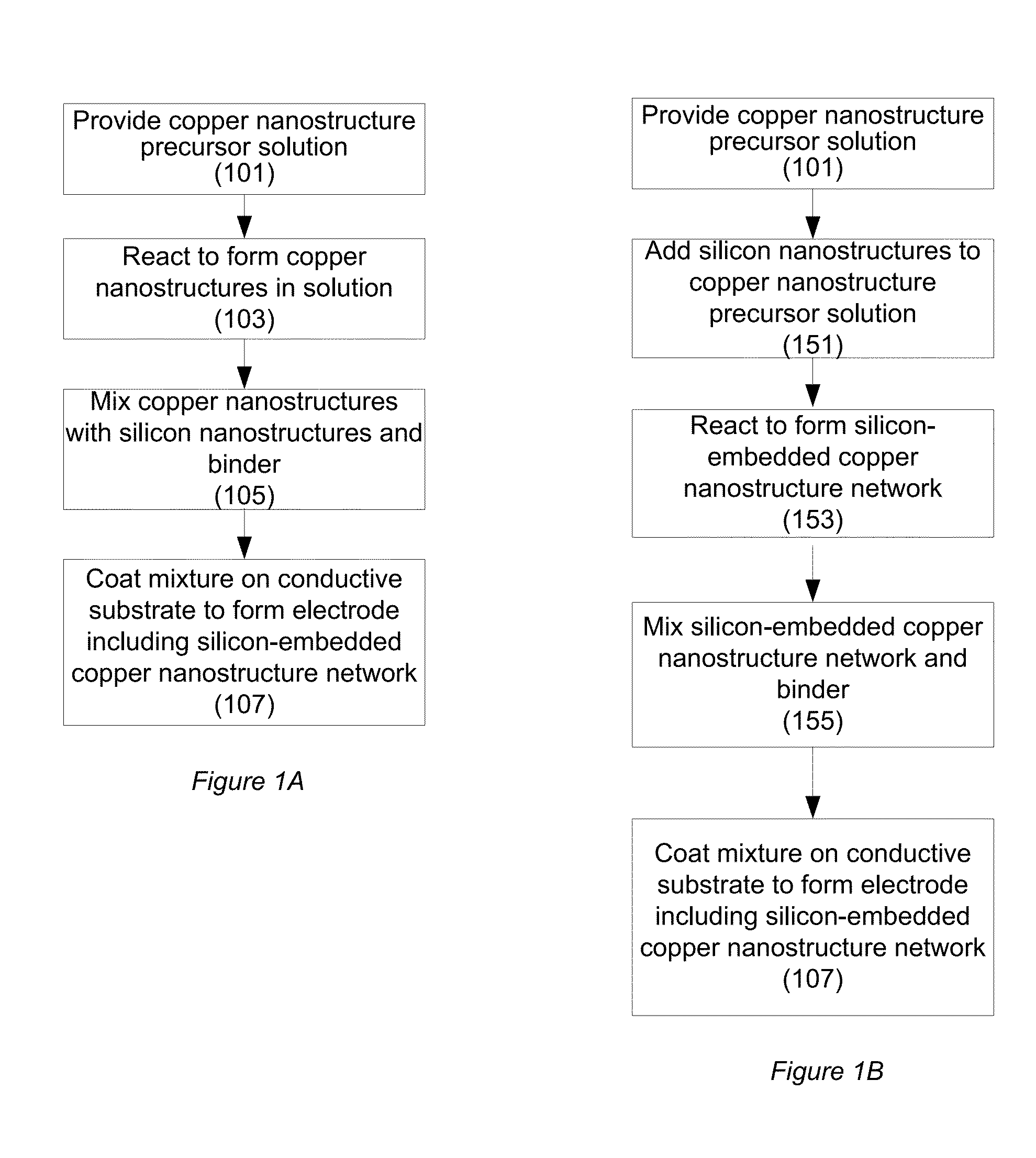Silicon-embedded copper nanostructure network for high energy storage
a nanostructure network and copper nanotechnology, applied in the field of lithium ion battery electrodes, can solve the problem of difficult silicon cycling and other problems
- Summary
- Abstract
- Description
- Claims
- Application Information
AI Technical Summary
Benefits of technology
Problems solved by technology
Method used
Image
Examples
example 1
[0053]Copper nanowires were formed from a solution of 21 mg CuCl2.H2O, 180 mg HDA and 50 mg glucose. The reaction was run at 95° C. for 8 hours. Samples were then taken and dried overnight. FIG. 8 shows SEM images 850 and 852 of a sample at different magnifications. Image 852 shows a very long and flexible copper nanowire. The nanowire 853 was measured at almost 30 microns long, with longer nanowires observed.
example 2
[0054]Copper nanowires were formed as in Example 1 with 270 g HDA (HDA:Cu ratio of 9:1). FIG. 9 shows an SEM image of a sample of a network of nanowires. Diameters of five nanowires were measured, ranging from 31.26 nm to 54.16 nm, with an average value of 39+ / −9 nm.
example 3
[0055]Copper nanowires were formed as in Example 1 with silicon nanoparticle powder added to the solution in a 1:1 Cu:Si molar ratio. Energy-dispersive X-ray spectroscopy (EDS) analysis on two samples gave the following atomic percentages.
Si %Cu %Sample 13466Sample 24555
[0056]Copper was found present in nanowire and nanocrystal forms. Without being bound by a particular theory, it is believed that the large surface area may accelerate copper nucleation and that the amine adsorption on the silicon surface may affect the capping efficiency of the copper crystals.
PUM
| Property | Measurement | Unit |
|---|---|---|
| porosity | aaaaa | aaaaa |
| porosity | aaaaa | aaaaa |
| diameters | aaaaa | aaaaa |
Abstract
Description
Claims
Application Information
 Login to View More
Login to View More - R&D
- Intellectual Property
- Life Sciences
- Materials
- Tech Scout
- Unparalleled Data Quality
- Higher Quality Content
- 60% Fewer Hallucinations
Browse by: Latest US Patents, China's latest patents, Technical Efficacy Thesaurus, Application Domain, Technology Topic, Popular Technical Reports.
© 2025 PatSnap. All rights reserved.Legal|Privacy policy|Modern Slavery Act Transparency Statement|Sitemap|About US| Contact US: help@patsnap.com



